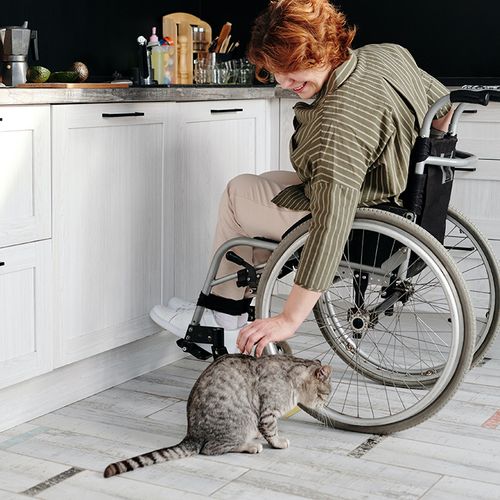Imagine yourself attempting to open a jar if your hand was bunched in a fist or trying to walk if one of your arms was clenched across your chest.
This type of uncontrollable muscle tightness is a constant challenge for an estimated one million Americans affected by upper limb spasticity. Typically resulting from a stroke, multiple sclerosis, cerebral palsy or an accident that affects the brain or spinal cord, upper limb spasticity most often affects the elbows, wrists and fingers.
Unlike paralysis, which causes loss of muscle function, upper limb spasticity is marked by uncontrollable muscle tightness and/or a lack of muscle inhibition. With upper limb spasticity, a person's elbow might not bend without forcing it down with the other hand, or spasms might cause the arm to recoil as though a spring had been released.
Problem: About 58% of stroke survivors experience upper limb spasticity. Of those, only about half get appropriate treatment-often because the condition develops slowly, and patients assume that it's a complication they have to live with.
Good news: Most people with upper limb spasticity can achieve better muscle control, and even increase their muscle strength, with a combination of medical treatments and specialized physical and/or occupational therapy.
An Undertreated Problem
Upper limb spasticity often goes undiagnosed because it may not develop until weeks, months or even years after a person has a stroke or is diagnosed with a condition that leads to the spasticity.
Best treatment: People with upper limb spasticity have the best chance of regaining mobility and functional ability when therapy combines repetitive task training exercises with injections of botulinum toxin type A (Botox), which was recently approved by the FDA to treat upper limb spasticity. (Botox was approved earlier by the FDA to help remove wrinkles and ease migraine pain.)
Research shows that when used for upper limb spasticity, Botox injections combined with repetitive task training can bring about a 30% improvement, on average, within 12 weeks and, in some cases, an improvement of up to 54%. Benefits typically last about three months. However, patients must have some arm function remaining after a stroke to benefit from the training.
The repetition involved in repetitive task training strengthens the brain's ability to communicate with different muscles. And even though the exercises won't eliminate spasticity, they can make it easier for patients to perform daily tasks, such as cooking meals, buttoning a jacket, even hugging loved ones.
Important: The sooner a person with upper limb spasticity starts the repetitive training, the better-if too much time passes, the muscles tighten to such an extent that recovery becomes more difficult. Still, it's never too late. What's imperative is to use the affected limb and not ignore it due to disability.
Ideally, patients meet with a physical or occupational therapist at least once a week for about 30 to 60 minutes, often for several months.* Then they practice at home what they've learned.
Important: The goal of therapy is to enable people with upper limb spasticity to do the types of activities that they need to do-for example, watering plants, buttoning clothes, etc.
When starting treatment, it's important to tell the therapist what activities you enjoy most or find most important. You're more likely to stay motivated and keep practicing when you see a clear benefit. Repetitive task training may include…
- Stretching exercises. Spasticity often leads to a shortening of tendons and/or ligaments, which interferes with normal motions Stretching can lengthen these tissues. Someone with hand spasticity might be advised to open the hand and extend the fingers...hold the stretch for several seconds...and then repeat.
- Putting lids on jars. There are more steps to this than you might think. The patient has to expand the fingers to grip the lid...grip the jar with the other hand...then contract the fingers to grip the lid and screw it on.
- Folding laundry. This uses muscles in the fingers, wrists, elbows, etc. Studies have shown that many patients who couldn't fold laundry are able to do it on their own, comfortably, after a few months of repetitive task training.
*To find an occupational therapist near you, contact the American Occupational Therapy Association, Inc., 800-377-8555, www.aota.org. To find a physical therapist, consult the American Physical Therapy Association, 800999-2782, www.apla.org.
